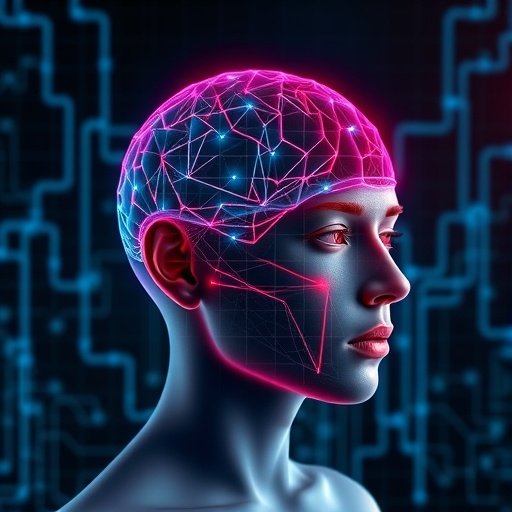Obsessive–compulsive disorder (OCD) continues to challenge the fields of psychiatry and neuroscience, afflicting roughly 3.5% of people worldwide and frequently evading early detection. With diagnoses often delayed by an average of over seven years, many individuals endure compounded symptoms as OCD overlaps or is misidentified alongside other psychiatric conditions. However, recent advances in brainwave monitoring technology combined with machine learning algorithms are unveiling promising pathways toward more precise and timely diagnosis. A groundbreaking systematic review published in the renowned journal BMC Psychiatry casts new light on the application of electroencephalography (EEG)-based machine learning classifications specifically targeting OCD, illustrating both the current status and the future potential of this burgeoning field.
Electroencephalography measures the brain’s electrical activity through multiple scalp electrodes, offering a noninvasive window into neural function. When leveraged with machine learning, these vast and intricate EEG datasets can be parsed to detect subtle neural signatures or patterns that might distinguish OCD sufferers from healthy controls or those with overlapping disorders. The comprehensive review synthesized findings from eleven rigorously selected studies, culled from an initial pool of 42, all adhering to predefined inclusion criteria and screened according to the PRISMA guidelines ensuring high methodological standards.
Yet, despite the exciting promise EEG-ML approaches hold, the review highlights a profound heterogeneity across research efforts. Variations emerge not only in population demographics—such as age, gender, and medication status—but also in the specific symptoms associated with OCD as documented in each study’s cohort. This inconsistency complicates efforts to generalize findings or replicate predictive models effectively. Furthermore, EEG preprocessing techniques, which critically shape the data fed into learning algorithms, varied widely, driving disparities in results and undermining cross-study comparisons.
Validation strategies that underpin confidence in machine learning models showed similar inconsistencies. While some studies applied robust cross-validation methods, others fell short or failed to adequately report their processes. A startling revelation was that only a minority of studies incorporated statistical interpretations alongside accuracy metrics, indicating an incomplete understanding of model reliability and clinical relevance. This absence of rigorous validation questions the real-world readiness of several proposed classification frameworks.
Perhaps most striking—yet disconcerting—is the review’s observation that none of the surveyed studies utilized cutting-edge interpretability tools such as SHAP (SHapley Additive exPlanations) or LIME (Local Interpretable Model-agnostic Explanations). These methods are revolutionizing machine learning by shedding light on the “black-box” nature of predictive models. In practical terms, adopting such interpretability techniques can elucidate which EEG electrodes and frequency bands most contribute to OCD classification, guiding targeted neurofeedback protocols or even neuromodulation therapies, including transcranial electrical stimulation. Their absence marks a critical missed opportunity for advancing both mechanistic insight and clinical application.
Cultural and demographic limitations pervade much of the research reviewed, as sample sizes remain modest and often lack representation from diverse ethnic and social backgrounds. The underreporting or omission of key demographic variables—such as medication status and severity of symptomatology—further constrain the relevance and reproducibility of model results. These factors collectively impede the establishment of universally applicable and equitable diagnostic tools.
Setting a pioneering precedent, this systematic review represents the first concerted effort to appraise EEG-machine learning classification methods in OCD comprehensively. It underscores both the urgency and opportunity to forge international consensus on methodological standards. Harmonization in study design, patient characterization, preprocessing pipelines, and validation protocols is imperative to propel the field forward. Only through such standardization can research teams unlock the translational potential of EEG-ML to truly transform OCD diagnostics.
Looking ahead, the review advocates for embracing modern interpretability methods and integrating multimodal data sources—combining EEG with behavioral metrics or neuroimaging, for instance—to enrich model fidelity. Such integrative approaches may pave the way for real-time, personalized monitoring and intervention technologies. The potential for EEG-based biomarkers to herald objective, noninvasive, and cost-effective screening tools could substantially reduce the prolonged diagnostic delays currently experienced by OCD patients worldwide.
Moreover, building larger and more demographically representative datasets will bolster the generalizability of machine learning classifiers. This expansion aligns with emerging trends toward open science and data sharing, which can mitigate sample size limitations and enable external validation across varied clinical settings. Efforts in these directions may also illuminate neurobiological subtypes within the broad OCD spectrum, refining tailored therapeutic initiatives.
The review’s insights highlight another critical frontier—the integration of neurofeedback and neuromodulation with EEG-ML classifiers. By delineating the neural circuits most predictive of OCD pathology, machine learning models could inform precise electrode placement or stimulation parameters. Such closed-loop systems promise not only enhanced diagnostic accuracy but also novel avenues for individualized treatment targeting dysregulated brain networks implicated in OCD.
In sum, this systematic review charts a candid and instructive landscape of the current status of EEG-based machine learning classification efforts for OCD. It candidly acknowledges existing limitations, from methodological diversity to interpretability gaps, while signaling the immense potential awaiting realization through collaborative standardization and innovation. As neuroscience and machine learning technologies continue to evolve rapidly, efforts to refine these classification frameworks could dramatically reshape the clinical approach to OCD diagnosis and management, offering hope for millions affected by this debilitating disorder.
Subject of Research: EEG-based machine learning classifications for obsessive-compulsive disorder (OCD)
Article Title: A systematic review of EEG-based machine learning classifications for obsessive-compulsive disorder: current status and future directions
Article References:
Naderi, M., Jahanian-Najafabadi, A. A systematic review of EEG-based machine learning classifications for obsessive-compulsive disorder: current status and future directions. BMC Psychiatry 25, 854 (2025). https://doi.org/10.1186/s12888-025-07296-z
Image Credits: AI Generated




